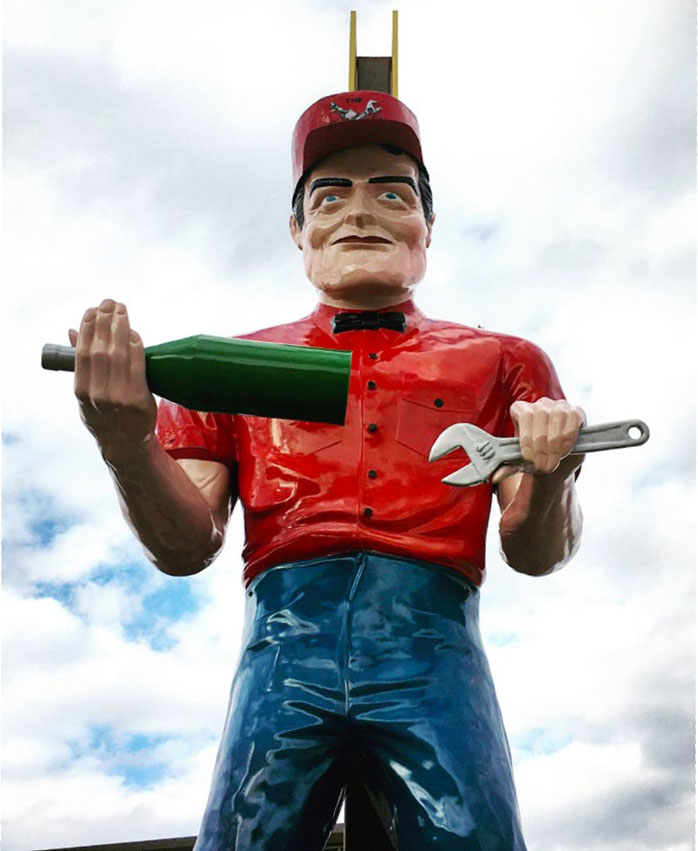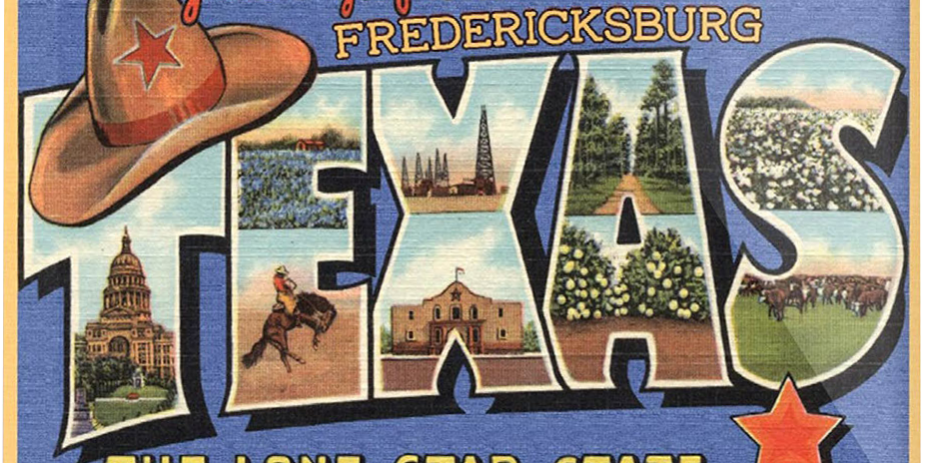By Mike Carsten
Fredericksburg is a city of about 12,000 people in the Hill Country of Texas, an hour’s drive from both Austin and San Antonio. German pioneers founded the community in 1846, and it has evolved into a heritage tourist destination.  Many of the buildings that are composed of timber or native limestone have historical designations.
Many of the buildings that are composed of timber or native limestone have historical designations.
On weekends, Texans flock to Fredericksburg for the town’s ambiance, museums, and festivals. This trend is perhaps a modern extension to another Hill Country tradition of having a Sunday house in Fredericksburg. These were small dwellings maintained near a church by farmers and ranchers who lived too far to commute for services easily. Their overnight stays included shopping and socializing.
Historic preservation is vital to residents since Fredericksburg touts itself as a unique tourist destination. Many local families can trace their roots back generations in the area. Although there are many memorable places for commercial archeologists, here are my five faves for Fredericksburg:
1: The Wine Garage

Outside this vintage car-themed winery is “Howard Huge,” a roadside giant. His bowtie and cap make him a somewhat rare supersized roadside salesman. Howard started life at a Chevron gas station in Maine and later worked nearby at Marden’s surplus. He’d been in storage for three decades before a 2017 restoration brought him to the Lone Star State and unveiled a hidden nametag on his shirt. Howard now clutches a wine bottle and wrench along a local stretch of U.S. Highway 290, dubbed the “Wine Trail,” welcoming thirsty guests for a mid-century-tinged local wine tasting. The pit-stop includes a tour of their “garage,” featuring vintage cars and signage.
2: Keidel Memorial Hospital

 The town’s former hospital, Keidel Memorial Hospital, was built on Main Street in 1909 and served patients until 1971. The stone building is currently a kitchen-supply store, named Der Küchen Laden, owned by Penny Perry Hughes, the granddaughter of Dr. Victor Keidel, who operated in the hospital. The exterior features metal lettering from the hospital. The Art Deco west wing, with a large glass block window, was added in the 1930s. Inside, old hospital gurneys serve as display tables for merchandise. A beautiful cast iron staircase leads to an old operating room, where merchandise such as mixers and blenders are displayed.
The town’s former hospital, Keidel Memorial Hospital, was built on Main Street in 1909 and served patients until 1971. The stone building is currently a kitchen-supply store, named Der Küchen Laden, owned by Penny Perry Hughes, the granddaughter of Dr. Victor Keidel, who operated in the hospital. The exterior features metal lettering from the hospital. The Art Deco west wing, with a large glass block window, was added in the 1930s. Inside, old hospital gurneys serve as display tables for merchandise. A beautiful cast iron staircase leads to an old operating room, where merchandise such as mixers and blenders are displayed.
To read the rest of this article, members are invited to log in. Not a member? We invite you to join. This article originally appeared in SCA Road Notes, Winter 2020, Vol. 28, No. 4. SCA Road Notes, informally known as SCA News, is a quarterly publication and a member benefit of the Society for Commercial Archeology. Back issues are available for download.
More Articles Join the SCA


